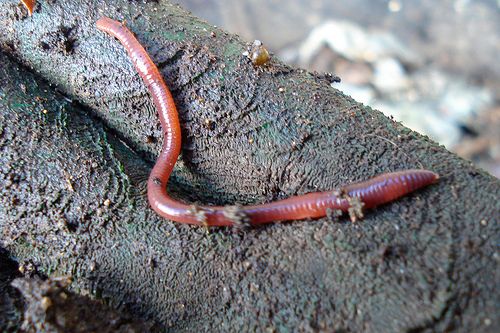The Ultimate Overview to Caring for Red Wigglers in Your Garden
Caring for red wigglers in your garden is a necessary element of sustainable composting practices that can considerably enhance dirt wellness and fertility. Recognizing their certain habitat demands, nutritional choices, and maintenance needs is crucial for cultivating a productive vermicomposting environment.
Comprehending Red Wigglers

Red wigglers are characterized by their reddish-brown coloration and fractional bodies, which can mature to four inches in length. They have a high reproductive rate, creating cocoons which contain multiple embryos, considerably enhancing their populace in suitable environments. Where to buy red wigglers. Their physiology enables them to tolerate numerous wetness levels, although they thrive in damp problems, ideally between 60 ° F and 80 ° F.))

Setting Up the Habitat
Producing an optimal habitat for red wigglers is important for optimizing their composting effectiveness and overall health. An appropriate setting consists of aspects such as wetness, temperature, and bed linens materials. Red wigglers flourish in a wet, dark setting with a temperature level variety of 55 to 77 degrees Fahrenheit. It is necessary to keep an eye on these problems closely, as extreme temperature levels can impact their task and reproduction.
When choosing a container, pick one that is well-ventilated to permit air flow while stopping excess moisture loss. Plastic containers, wood boxes, or specialized worm containers are all efficient options. The bottom of the container ought to have drain holes to protect against water build-up, which could bring about anaerobic conditions hazardous to the worms.
For bed linen, usage shredded cardboard, coconut, or paper coir, guaranteeing it is damp yet not soggy. This bed linens serves not only as a habitat but also as a source of carbon. Routinely inspect the dampness level of the bed linen, and include water as essential to preserve the suitable dampness. By establishing these conditions, you will produce a thriving environment for your red wigglers, motivating effective composting and much healthier worm populations.
Choosing the Right Food
Choosing the appropriate food for red wigglers is important for their health and wellness and composting effectiveness. These worms thrive on a well balanced diet plan that consists of a range of organic materials. Ideal food resources are composed of vegetables and fruit scraps, coffee grounds, crushed eggshells, and shredded paper. It is necessary to prevent meats, dairy items, and oily foods, as these can bring in bugs and create unpleasant smells in the composting atmosphere.
Red wigglers like food that is sliced or shredded, as this increases surface area and advertises much more effective food digestion. Additionally, presenting food in percentages protects against overfeeding, which can bring about anaerobic problems harmful to worm health. Monitoring the worms' eating habits can additionally offer insights; if the food is eaten rapidly, click to read think about slowly increasing the amount.

Maintaining Dampness and Temperature Level
A balanced diet plan is only part of the formula when it involves making certain the health of red wigglers; preserving appropriate moisture and temperature level is just as crucial. Red wigglers prosper in a wet atmosphere, ideally in between 70-85 ° F(21-29 ° C) This variety supports their metabolic procedures and improves their capability to decompose raw material efficiently.
Alternatively, extreme dampness can create anaerobic problems, which may damage the worms and produce undesirable odors. On a regular basis inspecting the moisture material and changing as necessary is necessary for a thriving worm populace.
To alleviate temperature level extremes, take into consideration using insulation for outside containers or moving the container to a shaded or temperature-controlled area. By meticulously taking care of both moisture and temperature, you create an optimal atmosphere for red wigglers, improving their efficiency and total health and wellness.
Harvesting Garden Compost and Care Tips
Gathering compost from your red wigglers is a satisfying procedure that not only benefits your garden yet additionally boosts the performance of your worm container - Where to buy red wigglers. To begin, choose a harvesting approach that matches your arrangement-- whether it's the tray, pyramid, or typical container technique. Each technique permits the splitting up of compost from worms efficiently
To collect, you can carefully excavate the compost from one side of the bin, permitting worms to move to the undisturbed side. You can use light to motivate worms to burrow deeper, making it much easier to collect the completed garden compost.
Care tips after gathering include restoring your worm bin with fresh bed linens and food scraps to preserve a healthy and Source balanced worm populace. Make certain that the moisture and temperature level levels continue to be optimal, and consistently check for any type of indicators of distress among the worms. By adhering to these practices, you'll guarantee a lasting cycle of garden compost manufacturing that enhances your yard.
Conclusion
Finally, the successful care of red wigglers necessitates a detailed understanding of their environment, dietary demands, and ecological conditions. Establishing an appropriate environment with proper ventilation and dampness degrees is vital for cultivating their health and productivity. Giving a well balanced diet while staying clear of improper foods will assist protect against pest problems. Routine monitoring and proper upkeep will certainly ensure a successful vermicomposting ecological community, inevitably producing nutrient-rich compost that benefits garden health and wellness and performance.
By developing these problems, you will certainly produce a successful environment for your red wigglers, encouraging efficient composting and healthier worm populaces.
The pH degree of the food is an additional important element; red wigglers flourish in a slightly acidic to neutral environment.A well balanced diet regimen is only component of the equation when it comes to guaranteeing the health of red wigglers; maintaining correct wetness and temperature level is just as essential. By carefully taking care of both wetness and temperature, you develop an optimum setting for red wigglers, enhancing their efficiency and general health.
Collecting garden compost from your red wigglers is a satisfying procedure that not just benefits your yard yet additionally improves the effectiveness of your worm container.